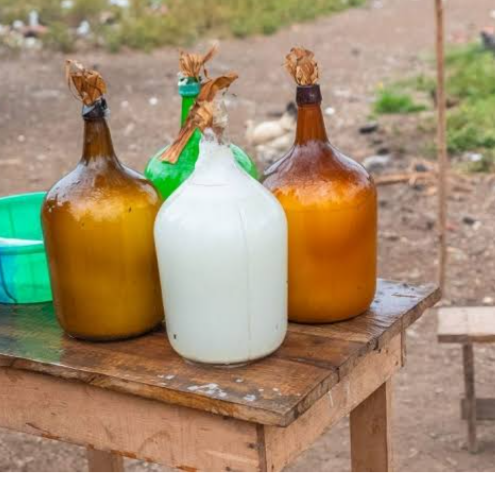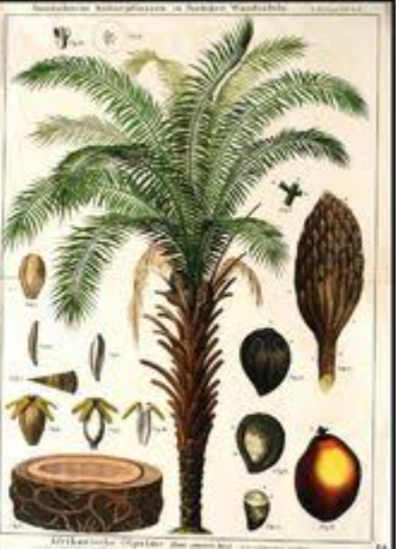
Oil palm is an important commodity in Nigeria. Palm oil and palm kernel oil are derived from plan fruits of the oil palm fruit. Other products derived from palm oil tree include palm wine, palm front to make thatched roof, broom and mats. Oil palm belong to the family Arecaceae (also known as palmea) . There are about 2400 species of oil palm all over the world.
West Africa is agreed to be the centre of origin of oil palm. The production extend from 16 degree North latitude at Senegal to 15 degrees south latitude in Angola. It extend eastward to Zambia and westward to Madagascar. Malaysia is one of the current major producers of oil palm and they penetrated from its production from Nigeria.
Other oil palms found all over the world include the American oil palm (Elaeis oleifera), maripa palm (Attalea maripa), Asian toddy palm (Caryota urens), betel nut palm (Areca catechu),
BOTANY: Oil palm is a monocot and monoecious plant. The plant grows to a height of 9m or more with a stout stem 30 to 38cm in diameter. It has a trunk and leaves. The trunk called a stipe, is the stem of the palm. At the tip of the stem, there is one bud. The bud is the growing point of the oil palm. If the growing point dies, the tree dies as well. The growing point of the adult oil palm produces 20 to 25 leaves every year.
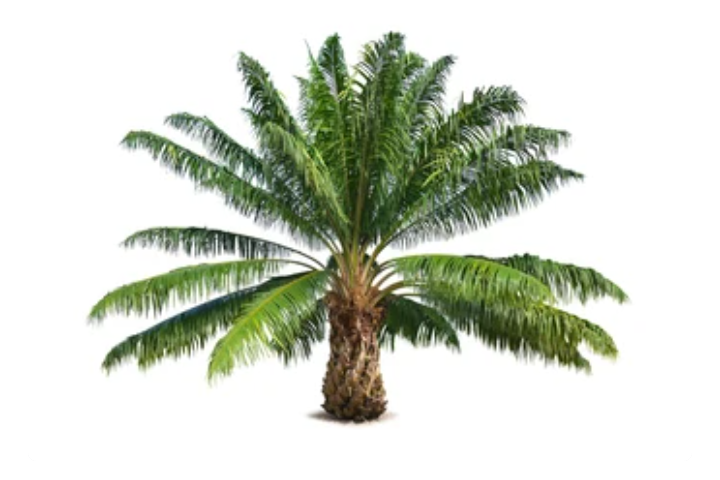
It is most important that the growing point should produce many leaves, because there will be a flower at the base of each leaf. If there are many leaves, there will be many flowers. And if there are many flowers, there will be many clusters of fruit.
The stem is covered with semi persistent leaf stage on which epiphytes often grow. The crown may contain up to 40 leaves or more known as palm fronds. The palm fronds bear up to 20 to 150 pairs of leaflets depending on species. Selected and oil palm breeds, flower between 2 to 3 years, while the unimproved breeds (local) flower in 4 to 5 years and at maturity may bear 1 to 12 fruits per year with an average of 24 palm fronds per year and the auxiliary flower cluster for each palm fronds. The Influorescence is enclosed in the spadis. The spadis will split into 2 or more patches longitudinal to expose the flowers or florex. The inflorescent is composed of the main axis and the outside branches of up to 40 or more covered with florex. The male flower are borne on side branches and both male and female flower are borne on the thick peduncle.
IMPORTANCE OF OIL PALM
1. They are source of cooking oil
2. Beef cattle can be fed with the green fodder from the cover crop intercropped with the palm.
3. Plan fruit is a source of palm-kernel oil cake which can also feed his cattle, that is, the palm kernel cake is the left over after extraction of the palm kernel oil.
4. Palm-kernel oil cake is a protein-rich food.
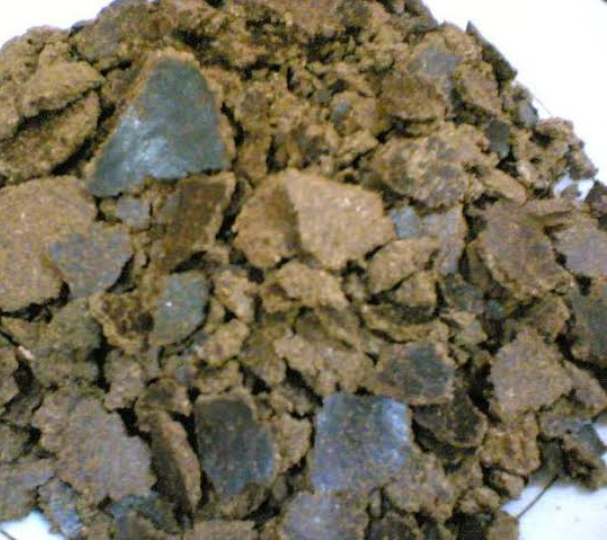
5. Palm oil is rich in vitamins and carotene.
6. Palm wine can be used to treat bad vision
7. Palm oil, obtained from the fruits, is used in making soaps, cosmetics, candles, biofuels, 8. The palm oil is used in making lubricating greases and in processing tinplate and coating iron plates.
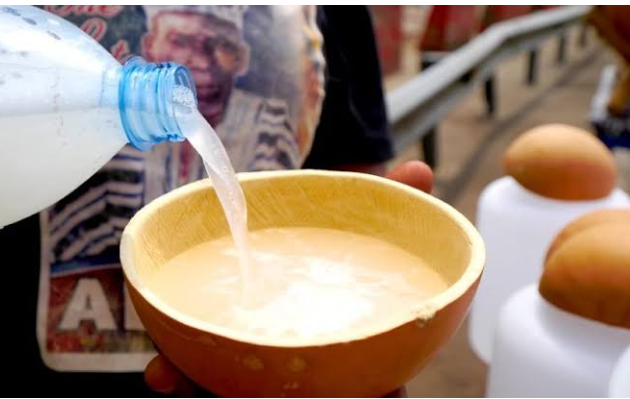
9. Palm kernel oil, from the seeds, is used in manufacturing such edible products as margarine, ice cream, chocolate confections, cookies, and bread,
10. The palm kernel oil is used in production of pharmaceuticals.
11. The plant is also grown as an ornamental in many subtropical areas.
12. They are source of construction materials for thatch.
13. Vegetable oil can be used as a source of biodiesel fuel for internal-combustion engines
TYPES OF OIL PALM FRUITS AND THEIR CHARACTERS
Nigrescens – black
Adbascens – white
Vigescens – green
Polissoni – mantle
The external characters are of no value in assessing the potential of oil palms. But there are four forms of oil palms. The forms include:
1. DURA: This oil palm has thick endocarp, thin mesocarp and large kernel
2. TINERA: It has thick mesocarp, thin endocarp with averagely sized kernel. It produce oil and kernel
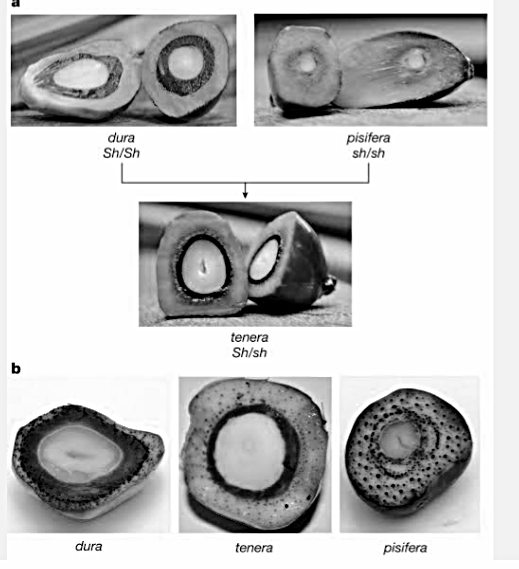
3. PISIFERA: It has thick mesocarp, little oil content, no endocarp, shelless with small kernel. The female type is often sterile without bunch. It is mainly used for crossing.
4. MACROCARIA : Shell (endocarp) is thick. It is an extreme form of Dura, which is still widely spread in Sierra Leone and western Nigeria, without any commercial value.
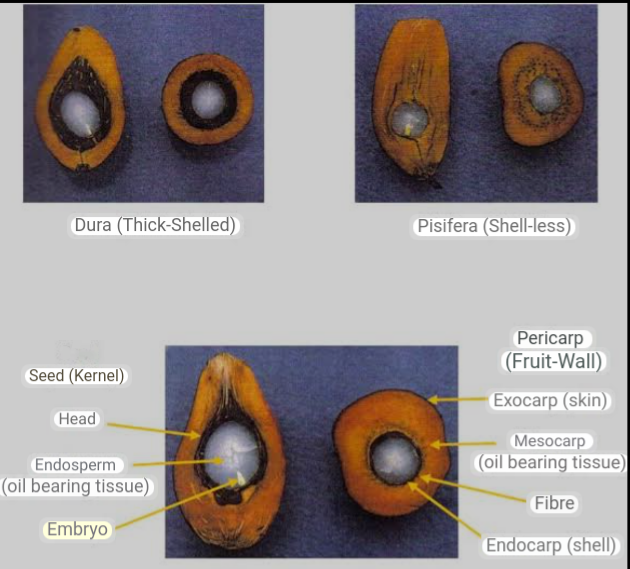
OTHER FACTORS THAT DIFFERENTIATE THE THREE VARIETIES
1. They differ in their sizes.
2. The thickness of the pulp differs.
3. The thickness of their shells differs
4. Some kernels have no shell at all.
To get a lot of oil, each fruit must contain a lot of pulp, a shell that is not very thick, and a big kernel.
BREEDING OF THE FORMS
For example:
Pisifera * Tinera = It will split up to give 50% Dura and 50% Pisifera
Tinera are monofactorial hybrid between Dura and Pisifera.
Tinera * Tinera= it will split up to give 25% Dura, 50% Tinera and 25% Pisifera
Tinera * Dura = It split to 50% Dura and 50% Tinera
Cross pollination is ensured by the following type of influorescence,male and female separately borne on thesame plant and reopen differently at different time ensuring cross pollination. The male flower opens first and the famale later.
CLIMATIC REQUIREMENT : The crop grows best when rainfall is averagely 1500mm/year. The ideal temperature is between 27 – 35 degree Celsius with frost free night. Oil palm require plenty of sunshine. Productivity reduces with excessive humidity. Yield also are adversely affected by dry hamattan wind. The plant grow on low lands and can occur up to 900m at sea level. Neutral soil are most favourable but can tolerate a fair range of soil pH. The root is fibrous and benefit from deep fertile soils free from iron concentration and should be well drained.
AGRONOMY OF OIL PALM
a. SITE SELECTION: The quality of soil and topography determines the use of any piece of land. The land require should be leveled and slightly undulating, well drained, fertile and deep. Virgin forest soils are adequately preferable.
b. CROP PROPAGATION : Seed propagation is used for oil palm propagation. The seeds are derived from hand pollination of Dura and Pisifera palm to give 100% Tinera, dual purpose palm. Two grades of seeds are
1. Special grade
2. Ordinary grade
This grade is based on specification of the fruit to bunch ratio, the shell to fruit ratio and mesocarp to fruit ratio
PRE-NURSERY: Seeds intended for planting should be subjected to high temperature for the pulping purpose. Seeds of harvested mature bunches are extracted from the bunch, scarified with heat, allowed to cool and the mesocarp is allowed to soften before the mesocarp are washed in clean water. Then air dried or stored or germinated. After processing of the seeds, they can be planted on the site, erratic germination will occur.
METHODS OF SEED SCARIFICATION.
There are two methods of oil palm scarification.
1. Wet heat method
2. Dry heat method
The dry heat method takes longer time than the former (wet heat method) but ensure uniform germination of the seeds.
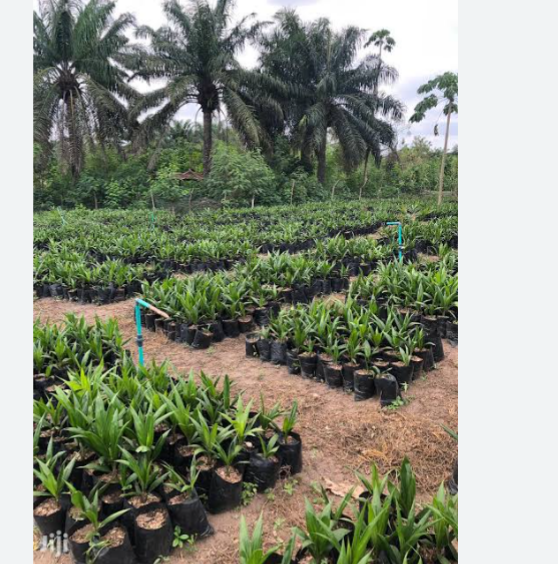
NURSERY: The single stage polythene bag nursery is the popular method. This ensures adequate care of seedlings in the early stage of growth. The seeds should first be germinated in a nursery box and later transplanted into the polythene bags. A new leaf will grow every month. The young seedling will stay in the box for 4 to 5 months. When a leaf shows two points (bifid leaf) coming up, then it is time to transplant the seedling out into the nursery. When transplanted into the poly bag, they should be thickly mulches with shredded decomposed oil palm refuse. Watering should be done by applying 1.5 litres of water per seedling per week especially in dry season. The oil palm seeds germinate after 90 to 100 days of sowing in nursery bed. The seedling stays in the nursery for 1 year. By this time, it would have produced about 15 green leaves. Thus, it is getting ready to be transplanted to the field. By 16 to 18 months old, the seedlings are fully ready to be transplanted to the field.
FRUITING: When the young oil palm is planted in the field, it produces male flowers which form at the base of each leaf. The production of the male flowers continues for several months. After which, it produces only female flowers.
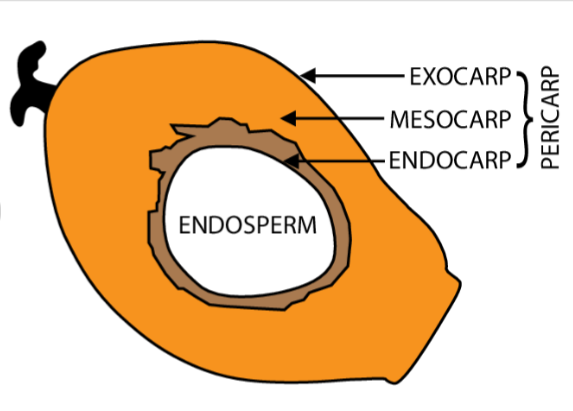
The male flowers are grouped in spikes. The female flowers form other spikes. The male flowers fertilize the female flowers. Fertilized female flowers turn into a cluster of fruit.
The fruits are held up in the spikelets. Before getting the oil out of the fruit, the fruit must be separated from the spikelets.
The fruits is oval in shape, 4 cm (1.6 inches) long. When ripe, the fruits are black with a red base and feature a single oily seed known as the kernel.
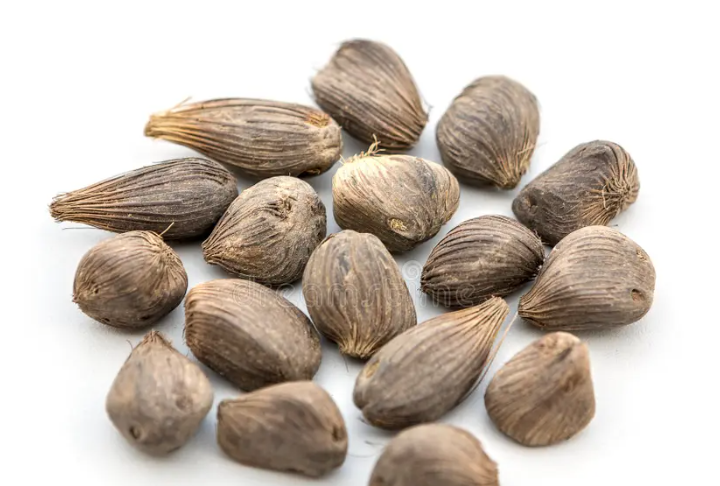
PARTS OF THE FRUIT
The fruits of the oil palm consist of the following parts:
Pulp: the pulp is yellow; when the pulp is crushed it yields palm oil.
Seed: inside the shell of the seed is the kernel; when the kernel is crushed, it yields palm kernel oil. The kernel also contains the germ.
FERTILISER APPLICATION: N:P:K:Mg fertilizers in the ratio 1:1:1 should be applied or ammonium sulfate or murate of potash or single super phosphate and magnesium sulfate should be applied twice at the rate of 56g/seedling at the second and eighth month of growth respectively.
WEEDING: Clean weeding should be carried out to eliminate competition for water, nutrients and to reduce tension in the bags caused by root growth of weeds.
SHADING: No shading is required for oil palm nursery at the 10th to 12th month. Seedlings should be transplanted to the field when the early rains are becoming regular.
LAND PREPARATION: The standard method of preparing oil palm field is to clear fell all trees and burn all trashed on the field. The field should be blocked, lined out, and holes should be dug. The holes should be spaced using a standard spacing of 8.7m triangular for oil palm. This spacing permit intercropping. Early planting of oil palm is done so that the seedlings would have establish before onset of dry season
TYPES OF NURSERY USED IN OIL PALM PRODUCTION
Two types of nurseries are used in oil palm production.
1. Polythene bag nursery
2. Bed nursery
1. POLYTHENE BAG NURSERY: The seedlings are planted with entire soils to ensure that no damage is done to the roots when removing the seedlings from the polythene bags. Sometimes when the plantation is far from the nursery, naked growth method is used due to bag heaviness. But in this case, the roots are deeped in clay sorry to reduce evapotranspiration.
When seedlings are grown on bed nurseries, the seedlings are planted in holes that has shape like a cross with a slight elevation at the centre. The roots are evenly distributed into the four arms of the cross. The holes are then filled with top soil and firmly consolidated. The planted young palms are therefore protected from damage by animals using a collar of wire netting around the seedlings so that rodents like grasscutter, will not attack it. The collar netting should be 15cm away from the palm base and 45cm high and 12cm long.
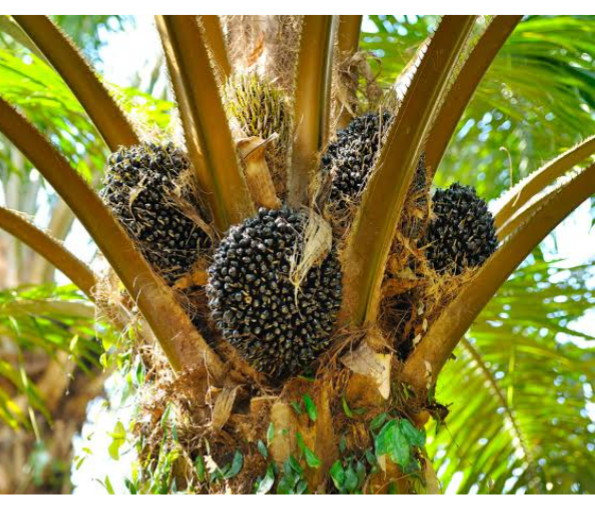
FIELD MAINTENANCE OPERATIONS
One of the major operations performed on oil palm is to cover the soil with legumineous cover crop so as to protect the soil from soil erosion. Also, other operations like weeding, supplying of dead plants, mulching, and removal of undecomposed mulch during the heavy rainfall, watering or irrigation of newly planted seedlings, removal of lower senescent weeds which are later burnt are carried out
HARVESTING OF OIL PALM FRUIT
Oil palms may live up to 200 years, but their commercial yield rapidly decreases after 30 years of age. They can be harvested manually with the aid of cutlass and the use of a simple machine
PROCESSING OF OIL PALM FRUIT
Processing can be summarised as sterilization, stripping, milling, separation, pressing, clarification and storage.
STERILIZATION : This is achieved by boiling. Heat is introduced to soften the fruit for stripping from the bunches. It also helps to disinfect the fruit by killing pathogens in it. Thus inhibit the action of lypolytic enzyme.
When the lipolytic enzymes are destroyed, and then pressed, the resulting palm oil is highly coloured because of the presence of carotenes.
In oil mills, sterilization chambers are employed but locally, pots and drums are used. The pots are placed on top of fire.
STRIPPING: This is the removal of fruits from sterilised bunches. After which, they are resterilized from about 30 to 45minutes. Hot and well sterilised fruits are easy to pound.
MILLING: This is the pounding of sterilized fruits for purpose of separating the mesocarp from the kernel (pulping). After separation, the separated mesocarp is pounded until no streak of colour is noticeable (that is, complete removal of mesocarp).
PRESSING: There are three types of pressing.
1. Screw hand pressing
2. Hydraulic pressing
3. Centrifugal pressing
The pounded mass is loaded into the press for extraction of oil. Sometimes needing addition of water to facilitate extraction
CLARIFICATION : Clarification is mainly done to separate or remove the impurities from the crude oil. The fluid coming out of the press is a mixture of palm oil, water, cell debris, fibrous material and ‘non-oily solids’. Because of the non-oily solids the mixture is very thick (viscous). Hot water is therefore added to the press output mixture to thin it. The dilution (addition of water) provides a barrier causing the heavy solids to fall to the bottom of the container while the lighter oil droplets flow through the watery mixture to the top when heat is applied to break the emulsion.(oil suspended in water with the aid of gums and resins). Water is added in a ratio of 3:1. There are two methods of Clarification. a. traditional method which produce a low grade oil.
b. Modern hydraulic and hand pressing method which make use of specially constructed double jacket red clarification drums.
STEPS IN CLARIFICATION USING THE DOUBLE JACKET RED CLARIFICATION DRUMS .
1. Firstly, the two drums are mounted over fire
2. About 45 litres of water is poured into each of the outer drums and boiled
3. The crude oil produced will flow through the boiling water to deposite the slog while the oil float on top of the water
4. The refined oil will overflow into the inner drum as more crude oil are added. Clean oil is drawn from the inner drum while the impurities settle at the bottom of the drum. This clarified oil still contains traces of water and dirt. To prevent increasing FFA through autocatalytic hydrolysis of the oil, the moisture content of the oil must be reduced to 0.15 to 0.25 percent. Therefore, It is expected that at the end of the process, the composition of the crude oil should be 90% oil and 10% water.
Re-heating the decanted oil in a cooking pot and carefully skimming off the dried oil from any engrained dirt and removal of any residual moisture is important. The re-heating is repeated until oil is completely clarified. This oil is called number one. After this process, the oil now obtained is fried over low fire to completely remove traces of water. The pure crude oil is then stored in tanks ready to be sold.
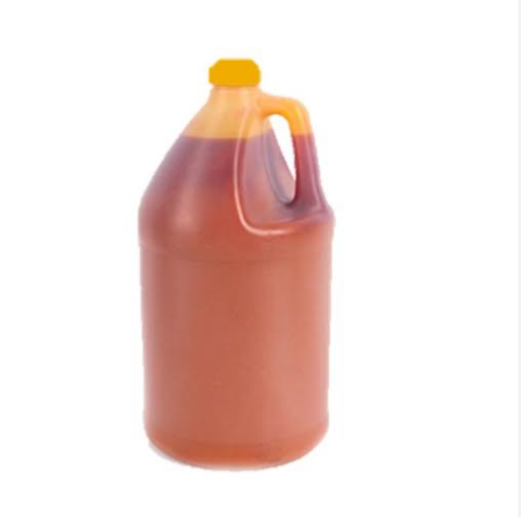
EXTRACTION OF THE VEGETABLE OIL
The vegetable oils can be processed by cracking or breaking the source material, pressing it, and sometimes applying heat. In some cases refining, bleaching, and additional processing are used to remove odours and flavours associated with the source material.

STORAGE: The kernel upon separation from mesocarp can be mechanically dried in drying chamber and there after pass to the crackers. Separation of the shell and kernel is achieved by pressing the mass into clay sorry where the kernel float and the shell sinks. The kernels are collected, cleaned, dried and packed for sale. Kernels are traded on their free fatty acid content (FFA). The lesser the FFA, the higher the grade and also the amount and extent of external and internal discolouration. The moisture content, presence or absence of moulds and other foreign bodies and the number of broken kernels, all determines the grade of a kernel
PESTS OF OIL PALM
i. Grasscutter
ii. Mealybugs (Pineapple mealybug) Dysmicoccus brevipes
iii. Bat
iv. Rhinoceros beetle (Oryctes rhinoceros)
DISEASES OF OIL PALM
i. Bacterial bud rot (Erwinia spp).
ii. Ganoderma butt rot (Ganoderma spp).
iii. Oil palm wilt (Fusarium oxysporum)
iv. Pestalotiopsis leaf spot (Pestalotiopsis spp).
